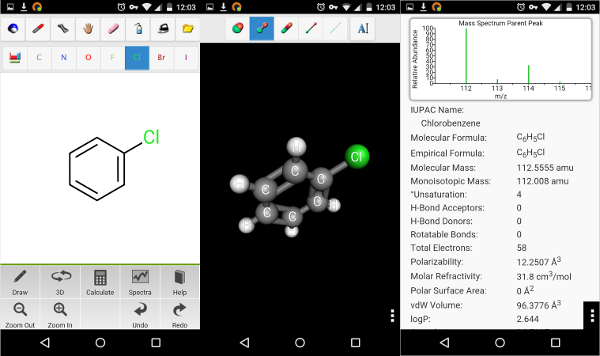



You can delete the selection using the DEL key or using the eraser tool. If you have selected a separate fragment, you can rotate it by dragging an atom in the selection. You can add/remove atoms and bonds to the selection by clicking them. Selection tools: all these tool can be used to drag the current selection or individual atoms and bonds.Undo/redo: undo or redo your recent changes.Eraser: erase atoms, bonds or the current selection.Once you’ve drawn a molecule, you can click the 2D to 3D button to convert the molecule into a 3D model which is then displayed in the viewer. The structural formula editor is surround by three toolbars which contain the tools you can use in the editor. MolView consists of two main parts, a structural formula editor and a 3D model viewer. NIST Chemistry WebBook (~30.000 spectra)Ĭopyright © 2014, 2015 Herman Bergwerf License.Crystallography Open Database (~300.000 crystals).The PubChem Project (~51 million compounds).RCSB Protein Data Bank (~100.000 macromolecules).

ChemDoodle Web Components v6.0.1: 3D render engine and spectrum display.Ketcher: Chemical 2D data reader/writer.The Virtual Model Kit has been a source of inspiration for the birth of this project. This web application is built on top of the JavaScript libraries and online services listed below. You can use MolView to search through different scientific databases including compound databases, protein databases and spectral databases, and view records from these databases as interactive visualizations using WebGL and HTML5 technologies. ChemDoodle 3D also offers integration with various third-party platforms and databases such as Twitter, PubChem, ChemSpider, and more.MolView is an intuitive, Open-Source web-application to make science and education more awesome! MolView is mainly intended as web-based data visualization platform. The software lets instructors generate multiple surface types and color functions for atoms, including Van der Waals, solvent accessible surfaces (SAS), and solvent excluded surfaces (SES). ChemDoodle 2D includes various drawing tools, which enables individuals to tag bonds or atoms, auto-layout attributes, perform structure cleaning, and create custom elemental color sets. Users can also add transparency effects on models and visualize objects with or without back faces. Teachers can interact with models in real-time, generate relevant 3D coordinates, and prepare partial and complete chemical structures for display. The application’s 3D graphics engine allows mentors to render text and show atom labels with required font, size, and color. Features include gamma correction, parallel processing, atom typing, file saving preferences, and predefined templates. ChemDoodle is a web-based and on-premise chemical drawing and publishing software, which helps educational institutions build 2D and 3D molecular structures for demonstration purposes.


 0 kommentar(er)
0 kommentar(er)
